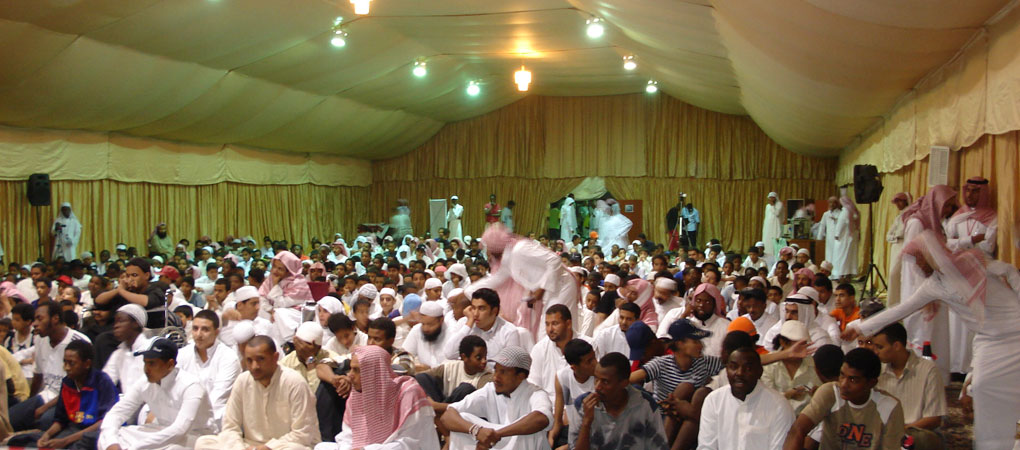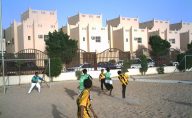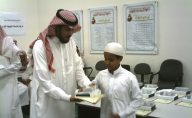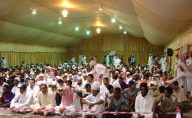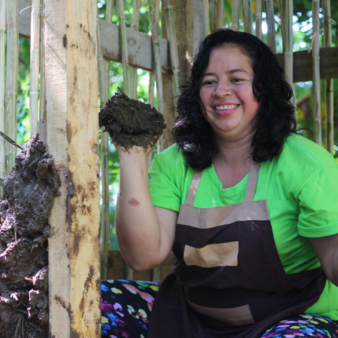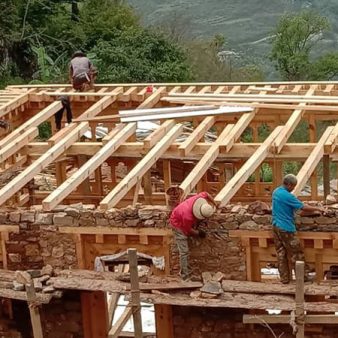Recognising the need to proactively address poverty and social issues in Saudi Arabia, this project has provided over 300 houses and support for vulnerable, low-income families. Communal facilities including mosques, community centres, children’s play areas and health centres ensure greater opportunities for community integration and reduced anti-social behaviour. Long term employment opportunities are increased through training programmes and affordable loans for business start-ups.
Project Description
Aims and Objectives
- To provide safe and stable housing for those in need, enabling people to begin to develop self-respect and self-reliance.
- To provide training and development programmes based on professional social methods.
- To build capacity and change residents’ status from needy to productive.
- To minimise negative behaviour.
- To contribute to the fight against poverty.
The Prince Salman Charity Housing Trust (PSCHT) was established in 1997 by a committee of scholars, sociologists and decision-makers who came together to identify the best and most economical solution to reduce, if not eliminate, poverty in Saudi Arabia. The recommendations of the committee led to the initiation of the Prince Salman Charity Housing Project (PSCHP).
The public understanding of poverty in Saudi Arabia is that it is confined to the immigrant working population. However, the reality is an increasing problem of poverty amongst the national population and a stigma associated with blue-collar employment, leaving many Saudi nationals without employment. Social problems of crime and drug-taking are now beginning to emerge amongst young people. There are also signs that family structures are beginning to weaken. The poorer Saudi nationals typically live in poor quality homes on the outskirts of Riyadh or in the old downtown areas. Houses here are typically made of earth or are boxed shelters. Some people live in outhouses attached to larger buildings and others live on the streets.
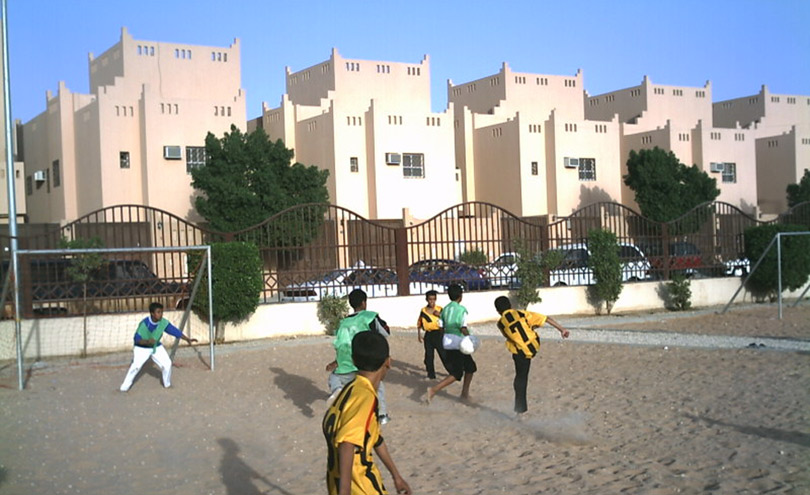
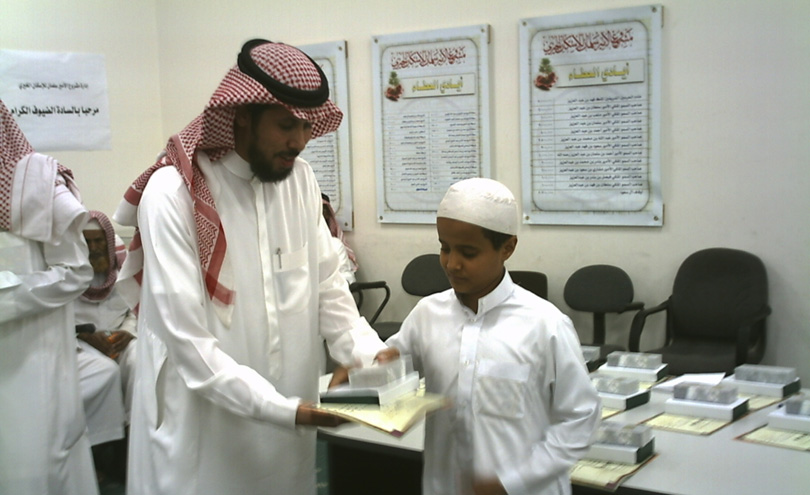
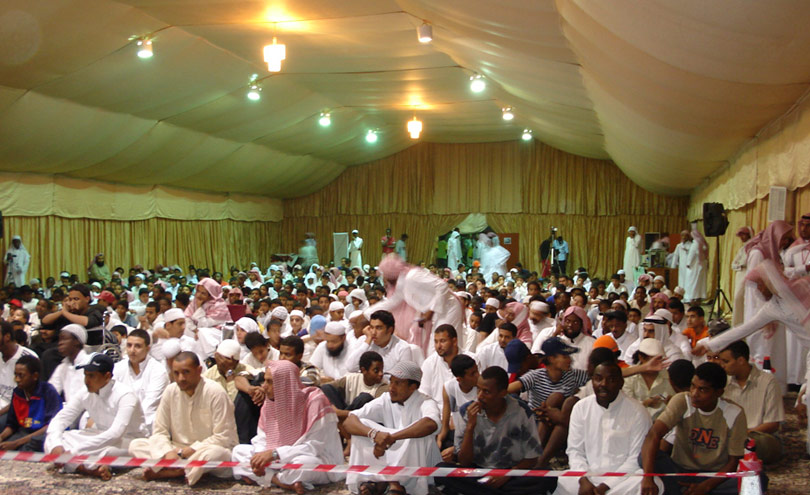
The project serves Saudi nationals who have lived in Riyadh for at least three years, and have a monthly income below US$ 800 and no accumulated wealth. Priority is given to those judged to be in the greatest need and the main beneficiaries typically include people with drug addictions, people who are homeless, senior citizens, orphans, people with disabilities and low-income households.
Key features
To date, 325 houses have been built in three different communities, with the construction of a further 336 dwellings in progress. At 200m², the houses are smaller than typical Saudi houses of 450m², but still much larger than the residents’ previous accommodation, which was on average 75m². The new housing developments are located within poor communities, in order to avoid creating isolated ghettos. Simple yet innovative architectural design reflects the local architectural heritage and considers cultural and religious preferences.
The dwellings are built with three stories and are carefully designed to ensure that there is sufficient privacy and that no household’s space is directly overlooked an important aspect within the local culture. It is the first time this “privacy concept” has been used in housing communities in Saudi Arabia. Shared facilities are provided in each of the communities, including social community centres, mosques, children’s playgrounds and green areas. Five per cent of all dwellings have been designed specifically for people with disabilities, reflecting the percentage nationally of adults living with disabilities.
The project has increasingly recognised the need to address environmental issues. Construction materials are now sourced locally and water and energy saving is encouraged with the use of passive solar design, low energy appliances and re-use of wastewater for irrigation
The local community has been actively involved in the project in a number of ways. The needs of the existing community and input on the design of future housing have been determined through the use of questionnaires. Residents are involved in the practical, ongoing management of the project, and focus groups have been developed to monitor and report on needs, problems and other requirements as they arise.
As the project has progressed, specific needs of the communities have emerged, and have been incorporated as the project has adapted. Listening to potential residents has allowed the creation of tailor-made housing communities to suit the needs of the targeted communities, for the first time in Saudi Arabia.
As well as living in significantly improved accommodation, the residents are given the necessary support to help them improve their well-being and to encourage independent living. Over 300 people have attended training programs that have improved their skills, and affordable loans are available to encourage the creation of small businesses. Rents are charged at only five per cent of the market rent to help residents become financially sustainable. The rental income is minimal and used for local neighbourhood improvements only.
The cost of the project is considered low when compared to the local Saudi market price at US$67,000 per dwelling, compared to US$93,000 per dwelling. Over 90 per cent of the project’s funding has come from charitable sources and the remainder from the interest on investments held by the Trust. Plans are underway for the Trust to build and operate a commercial shopping mall that will generate an annual income and reduce the dependency on charitable funding.
Impact
The project has introduced a wide range of new approaches, both in terms of design of the accommodation, environmental concerns and addressing the social needs of excluded Saudi nationals. Poor urban neighbourhoods have been upgraded and non-residents are becoming involved in the social programmes provided.
Running for nine years, the project provides shelter and support for hundreds of families and will continue to do so. The quality of life of the residents has been improved through increased income, poverty reduction and better housing. Significant social improvements in the neighbourhoods where the programme has been working include the improvement of school attendance and a reduction in crime and anti-social behaviour.
Why is it innovative?
- Recognition of the need to address poverty and social issues in Saudi Arabia more proactively
- Combination of housing provision and opportunities for social development
- Horizontal and vertical interior circulation of the housing units to increase family bonding as well as easy access
- Introduction of the “privacy concept” in housing communities for the first time in Saudi Arabia, using design to ensure privacy in three-storey buildings
- Introduction of tailor-made housing communities to suit the needs of the targeted communities, for the first time in Saudi Arabia
What is the environmental impact?
Local building materials have been used wherever possible. The cement, insulated blocks, floor tiles and all insulation materials (roof, underflow and water-tank) are sourced locally. Riyadh natural stone is used for the external cladding.
The project ensures a more appropriate use of energy and water resources. As the project has evolved it has increasingly attempted to improve environmental sustainability. Plans are for future developments to extend this much further. Passive solar design reduces the need for energy use and low energy light bulbs are used. Residents are given guidance in ways to save water. Waste water is recycled and used for irrigation in the local area. There has been a reduction in the average water and energy bills for houses built within the project.
The project aims to conserve the natural environment and green areas have been incorporated into each housing construction. Education has been provided to residents to increase awareness of their environmental impact and to impart simple ways to save energy and water. The success of this approach is reflected in an average reduction of between five and 30 per cent in water bills and between 15 and 25 per cent in energy bills.
Is it financially sustainable?
A plan to create a sustainable funding stream for the future is already underway. A commercial shopping mall will be built and operated by the Trust, which will generate annual income. This will make the project less dependent on the charitable funding it relies upon for 90 per cent of its income. Construction is due to commence in 2007 and will be completed by 2009. The revenue from the mall will fund ongoing revenue costs and the construction costs of new projects, as well as the costs of the various social development programmes.
The project provides training and development programmes to encourage more self-help and self-reliance amongst the residents and in some cases developing an alternative income to criminal activity. A range of skills are taught including English, computer training and tailoring. Employment is generated within the projects themselves, with construction and security jobs. Loans are provided for those who wish to set up their own businesses.
Housing is more affordable and more accessible to people than it was before the project. Rents charged are very low at only five per cent of the market rate and this has enabled people to improve their financial position. The annual rent is fixed at US$ 530, typically between 10 and 15 per cent of what residents were paying before. It is planned to increase these rent levels gradually. Residents have a guaranteed tenancy for five years during which time they are expected to have enhanced their living situation sufficiently to move on to other accommodation. If, however, this is not the case, they will be allowed to stay, providing that they are still involved in further education.
What is the social impact?
Bringing communities together is a very important part of the project as it seeks to improve social cohesion in the poorer quarters of Riyadh. The new housing communities are located in existing low-income areas to maintain and enhance existing community links and to ensure that there is greater opportunity for integration. Residents are encouraged to become more involved within their local communities and open community meetings are held regularly with an average attendance of 31 persons. An entertainment programme has created opportunities for social interaction and has an average attendance of over 60.
Educational programmes have been provided equally for men and women, and have trained over 300 to date, increasing their skills, abilities and opportunities for income generation.
The project helps reduce behaviours that contribute towards ill-health. Safer living environments are provided, both through design and with the provision of neighbourhood security services which employ local residents. A safe play environment is provided for children and ample green space helps to provide a healthier living environment. The new health facilities built in the communities have already treated more than 3,000 people.
Barriers
- Residents of the housing communities were very sceptical about the stated intention of helping them and it took a great deal of time and effort from the social workers to gain their trust.
- Local communities were displeased with the project at first, as they thought that this was just another project aimed at helping the rich become richer and the poor poorer. Again, it took a great deal of time and effort from the social workers to gain their trust.
- Due to local cultural habits and customs, families do not want to live in exposed dwellings where neighbours can see inside the buildings or overlook the garden. The project introduced the “privacy concept” in housing communities for the first time in Saudi Arabia, using design to ensure privacy in three-storey buildings.
Lessons Learned
A wide range of lessons has been learned in the project and these have been summed up by PSCHT in the statement, “there is a lot to be learned from the poor, if only we listen”. These have included:
- Wealth in Saudi Arabia is traditionally measured in terms of money, but the wealth amongst residents of these projects is measured in terms of their self-respect.
- New ways have had to be found to communicate with potential residents and earn their trust.
- Inclusion of training and development has been important in enabling these projects to be successful, whereas other schemes for low-income housing have failed. An approach beyond the provision of housing is crucial in enabling people to become self-reliant and to improve their quality of life.
Evaluation
The organisation and its projects are subject to regular monitoring by specialists employed to carry out the tasks. Programme evaluation studies have now been commenced to evaluate their impact.
Transfer
The initial project has now expanded. Six projects are now in progress and there are plans for future developments. Lessons learned from the earlier projects have been incorporated in the later projects. Plans for future projects include the introduction of new energy saving methods and the use of solar energy, academic teaching on the development approach used and further monitoring of impact. It is planned to build housing communities in all of the 19 Riyadh governorates as well as expanding the activities to include building schools.
The approach has been introduced to other housing community projects in Saudi Arabia by means of professional group lectures, distribution of lecture materials and workshops. Local and national housing policies have changed due to the lessons that have been learnt from this project. It is now recognised that the aim of housing projects should include training to enable those onlow incomes to become more productive members of society.
The design and development approach of human development through housing has been used by organisations in other provinces, including Al-Jouf, Jazan, and the eastern Province.
There has been a range of visitors to the project including senior representatives of the Riyadh city authority; a group from the Arab League representing various Arab ministries of Social Affairs; a team from Norway; several local housing societies.
Partnership
Local community, private sector, national government

